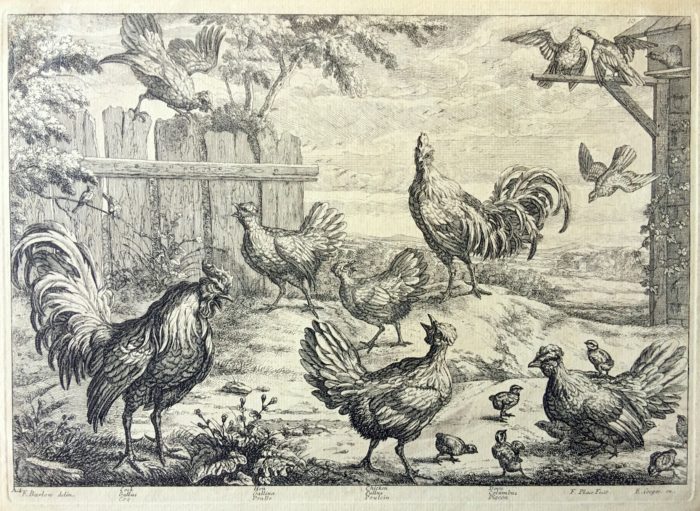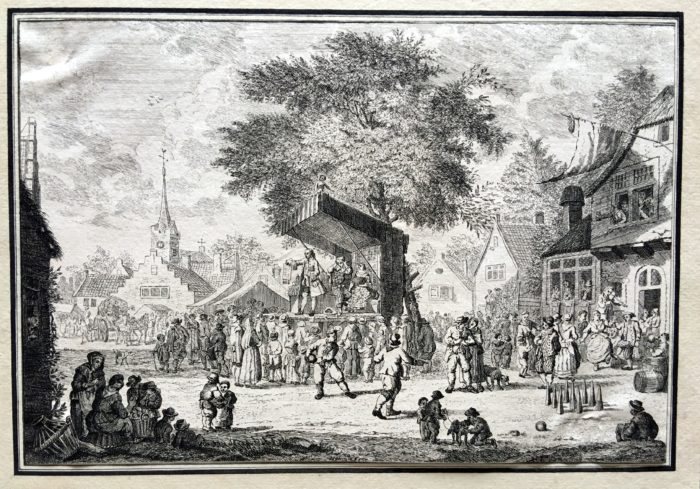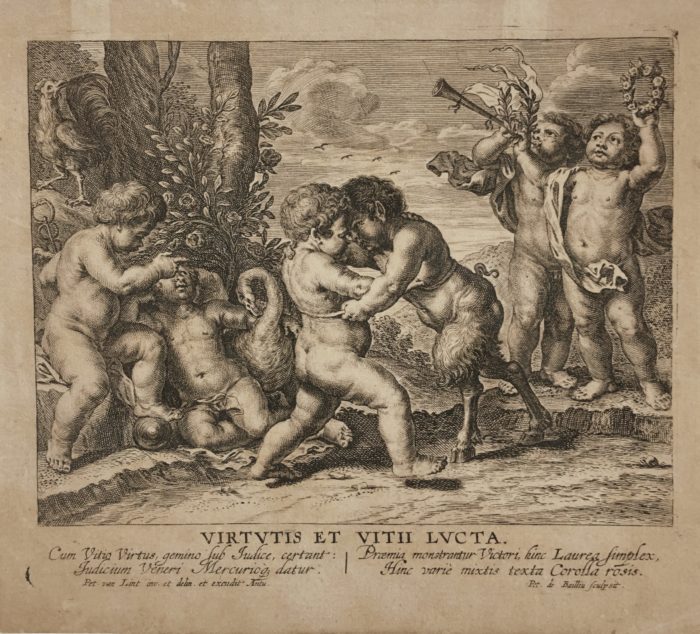
Francis Barlow (1626-1702) Cock, Hen, Chicken, Dove (after); etching, c. 1680. Etched by Francis Place (1647-1728). With the names of Barlow, Place, and Cooper (ex.) etched in the plate, as well as the names in of the birds depicted, as follows: Cock gallus coq ; hen gallina poulle ; chicken pullus poulcin ; dove columbus pigeon ; F. Barlow delin. ; F. Place fecit ; E. Cooper ex. From Barlow’s series Various Birds and Beasts.
A good impression, in only fair condition (the paper toned due to placement in a non-archival mat), but the matrix satisfactory, with a small margin, 8 1/4 x 11 1/8 inches, the margin approx. 3/8 inch around.
Place has been considered a student of Wencelaus Hollar, but in a letter Place clarified the relationship: “Hollar was a person I was intimately acquainted with…but never his disciple nor anybodys else. which was my misfortune.” (from Pennington’s catalog raisonne for Hollar, p. XIV)
Barlow ranks among the most prolific book-illustrators and printmakers of the 17th century, working across several genres: natural history, hunting and recreation, politics, and decoration and design. He has come to be regarded as a “surprisingly neglected artist”. Art historian Mark Hallett accounts for this by noting that Barlow’s time is British art’s “forgotten era” – one that “has tended to be overshadowed by the achievements of earlier artists, such as Van Dyck, or those that came later, such as Hogarth”; Hallett finds this unjust: Barlow made a significant contribution to what “in reality [. . .] was a remarkably rich, vibrant and cosmopolitan period for the visual arts in Britain.



